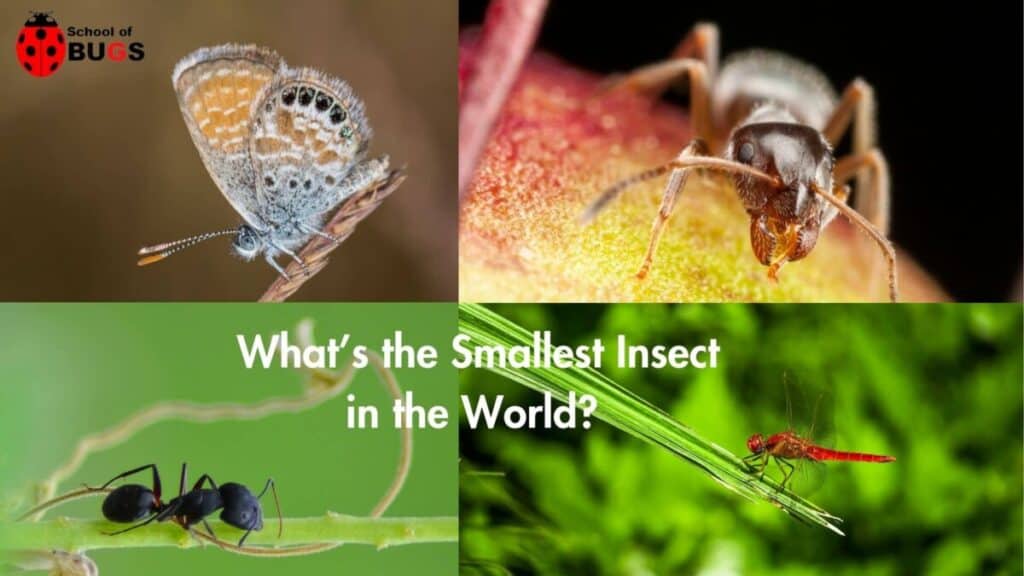
Insects come in all kinds of shapes and sizes. Yet, when we think about an insect, we usually think about something small. But how small do they get exactly?
Can you guess how small the smallest insect in the world is? Give it your best guess and find out in the next section!
The Fairyfly: World’s Smallest Insect
The fairyfly is the smallest insect discovered by biologists so far. How small, you ask? Well, the smallest fairyfly ever measured was 139 micrometers long (0.13 mm or 0.005 in).
Fairyflies are actually a family (Mymaridae, in Latin) which includes multiple species of wasps. Yes, despite the cute name, fairyflies are not flies, but wasps. The different species of fairyflies vary in size, but they are almost never more than 1 mm long.
For the human eye, everything smaller than a millimeter is barely visible, but we also must admit there is a big difference between something that’s 1 mm long (the largest fireflies) and 0.13 mm long (the smallest fairyfly). In fact, that’s almost a 10-fold difference.
The fairyfly we are talking about when we say 139 micrometers is Dicopomorpha echmepterygis. That’s officially the smallest insect in the world, but not the smallest flying insect.
That’s because this refers to the male fairyfly from this species, which is much smaller than the female and does not have wings.
However, the smallest flying insect in the world is also fairyfly. It’s called Kikiki huna and it was found in Hawaii in 2000. This type of fairyfly can be as small as 150 micrometers in length. The name Kikiki huna is coined from two Hawaiian words that mean ‘tiny bit’. How cute is that?
Another extremely small fairyfly is Tinkerbella nana. Found in Costa Rica and named after Tinkerbell, this fairfly is around 250 micrometers (0.25 mm) long.
How small is that, though? Well, a single strand of human hair is between 100 and 180 micrometers long. So, some of these tiny wasps are as long as a single strand of hair is thick. Mind-boggling!
Smallest Insects in the World by Type
We’ve found out that the smallest insect in the world is the fairyfly. Since it’s a type of wasp, it’s also the smallest wasp in the world. But what about other types of insects? What’s the smallest butterfly, ant, or mantis? Let’s find out!
The Smallest Butterfly: Western Pygmy Blue Butterfly
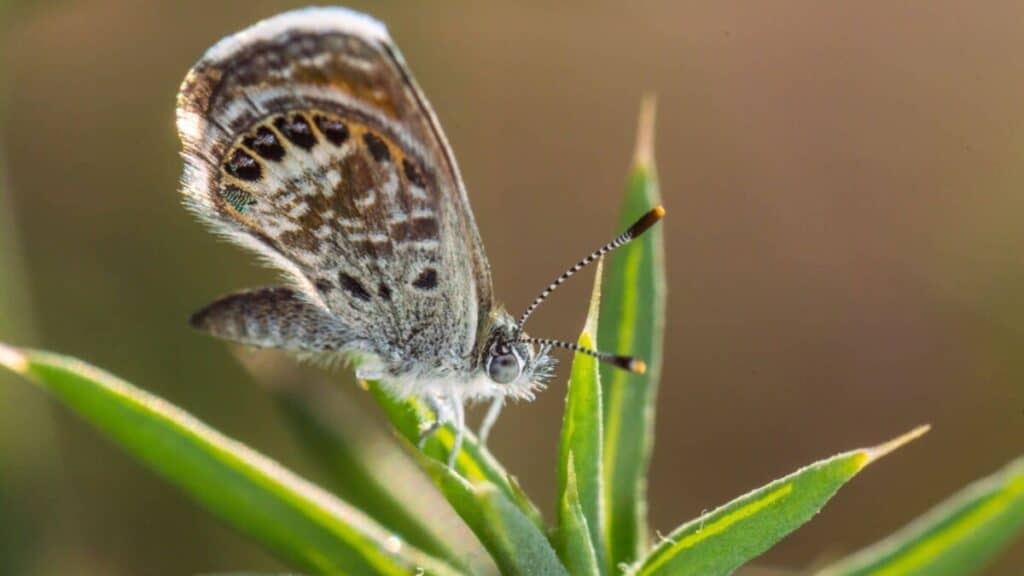
With a wingspan of 12 mm (half of an inch), the smallest butterfly in the world is the Western Pygmy Blue Butterfly.
Compared to the microscopic fairyflies, the Western Pygmy Blue looks huge. But, compared to the butterflies we most often see, this blue wonder is tiny.
Let the name not fool you, though. The Western Pygmy Blue features the color blue only at the base of its wings.
The tips or the wings are a shimmering dark copper color, which will probably be the first thing you notice if you happen to see this tiny wonder.
Smallest Moth: Stigmella maya
Stigmella maya, a micro moth from the Yucatan peninsula, is the official record holder for world’s smallest moth (at least according to some sources).
It’s also the smallest insect from the order Lepidoptera which includes both butterflies and moths.
Stigmella maya has a wingspan of 2.8 mm, which is pretty tiny. However, there are actually quite a few moth species that come close to this size. For example, the pygmy sorrel moth (Enteucha acetosae) can be just as small.
Moreover, there are thousands of different micromoths around the world. Some of them have not yet been measured or given names by scientists, so the record holder might change in the years to come.
Smallest Fly: Euryplatea Nanaknihali
As we’ve already mentioned, fairyflies are not actually flies, but wasps. So what’s the smallest fly? The title belongs to Euryplatea nanaknihali, a tiny fly found in Thailand by Brian Brown in 2012.
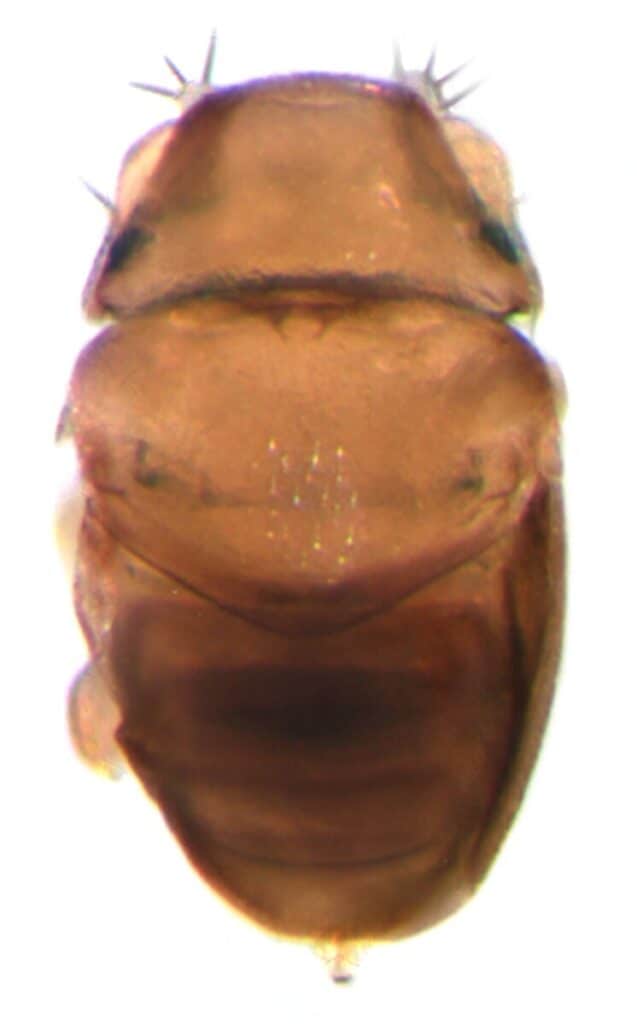
There are about 1800 different kinds of praying mantis around the world, and most of them are pretty large. But the Bolbe pygmaea mantis is only 1 cm long (or ⅖ of an inch).
This tiny mantis is native to Australia and it could literally fit on the tip of your finger. While people often confuse it with a tiny cricket or grasshopper, this is actually a true praying mantis: a carnivore and a hunter.
Smallest Dragonfly: Scarlet Dwarf Dragonfly
The smallest dragonfly in the world is the Scarlet Dwarf (officially known as Nannophya pygmaea).
You’ve probably noticed by now that most of these tiny species have the word ‘pygmaea’ in their names. The word is there exactly for the reason to designate their small size – it means ‘dwarf’.
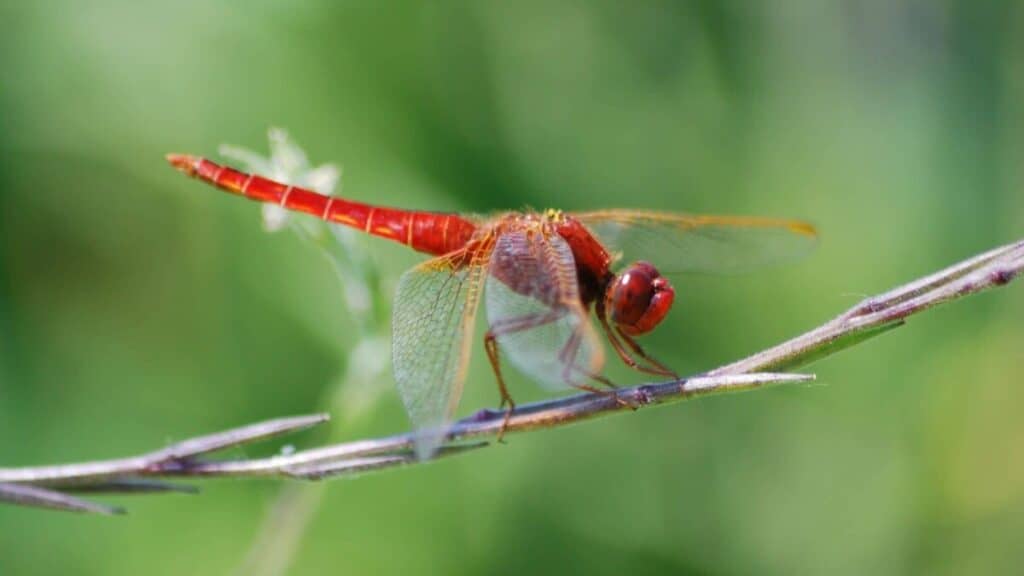
And the Scarlet Dwarf is really tiny. This cute red dragonfly is only 16 millimeters long on average, with the smallest adult individual found being only 15 mm long.
The Scarlet Dwarf belongs to the family of Pygmyflies (Nannophya) which includes various tiny dragonflies in different colors.
Fun fact: In prehistoric times dragonflies were crazy large. They commonly had wingspans of over 70 cm. The largest dragonfly alive today (Megaloprepus caerulatus) has a wingspan of 19 cm.
Smallest Ant: Carebara bruni
The answer to the question of the world’s smallest ant is surprisingly complicated. There are multiple issues that complicate the answer.
First of all, not all ants in a colony are the same size. Workers are typically much smaller than the queen, for example.
Moreover, not all species of ants that exist have been studied and described. So, whichever ant we choose as the smallest, we have to accept that there might be a smaller version of it somewhere out there.
However, the species Carebara Bruni is typically considered the world’s smallest ant. The worker ants from this species are only about 1 mm long (sometimes even less).
The competitors for the first spat also include the little black ant with workers from 1 to 2 mm long, and the almost transparent pharaoh ants which are usually around 2 mm long.
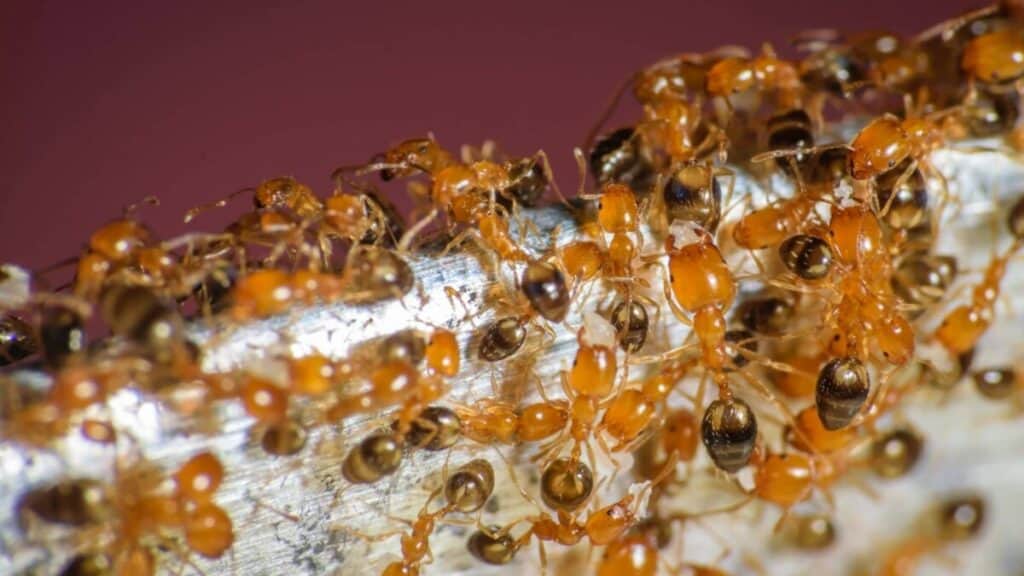
Smallest Spider: Patu Digua Spider
Okay, spiders are not insects. If you are an entomology enthusiast, you certainly know that! However, we still tend to think of spiders as belonging to the world of bugs, and we simply couldn’t pass up the opportunity to mention this adorable little guy.
The Patu Digua spider was found near river Digua in northern Columbia. The males from this species are only about 0.37 mm (0.015 in) long, which is barely visible to the human eye.
Final Thoughts
The world of bugs never ceases to amaze us. There are simply so many different insects around, and when we start paying close attention, we notice they have such amazing characteristics. Who knew there was a microscopic wasp so small as the fairyfly?
Alright, that’s it for this article, here are a few hand-selected articles that you might also find interesting reads:
7 Bugs That Can Survive Extreme Cold
10 Peculiar Facts About Butterflies
10 Fascinating Facts About Bees
Recent Posts
Tiny Black Bugs in Bathroom NO WINGS: What They Are and What to Do!
Finding tiny black bugs in your bathroom can be uncomfortable, to say the least. Especially if they are persistent, or they appear in very large numbers, which they often like to do. When it...
Tiny Black Bugs in Plant Soil - What Are They & What To Do About It
A short horror story: You get a new houseplant. You do your best to take care of it. You’ve ensured that it has the right soil, the right amount of sun, it gets enough water. And then one day, you...

